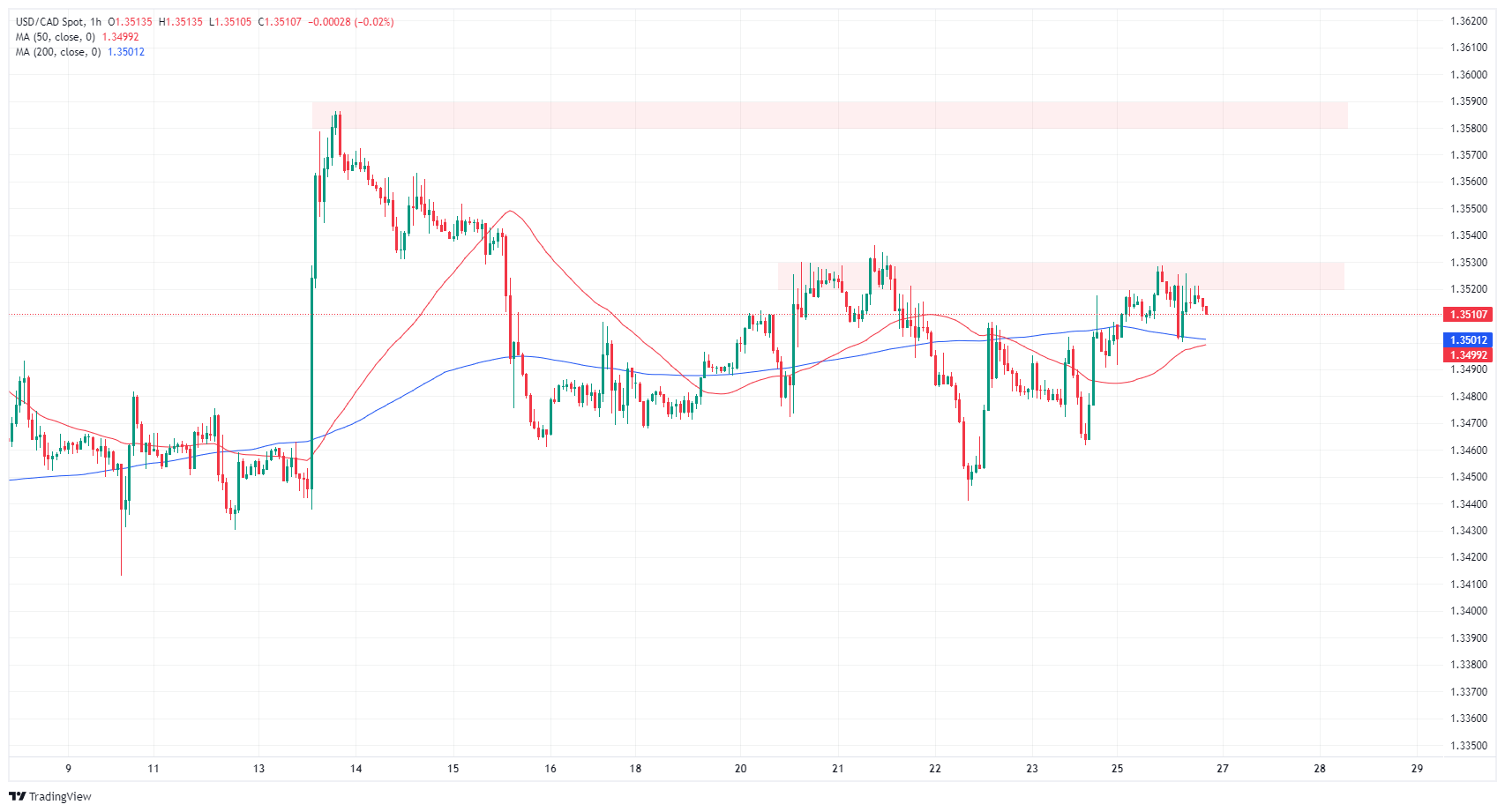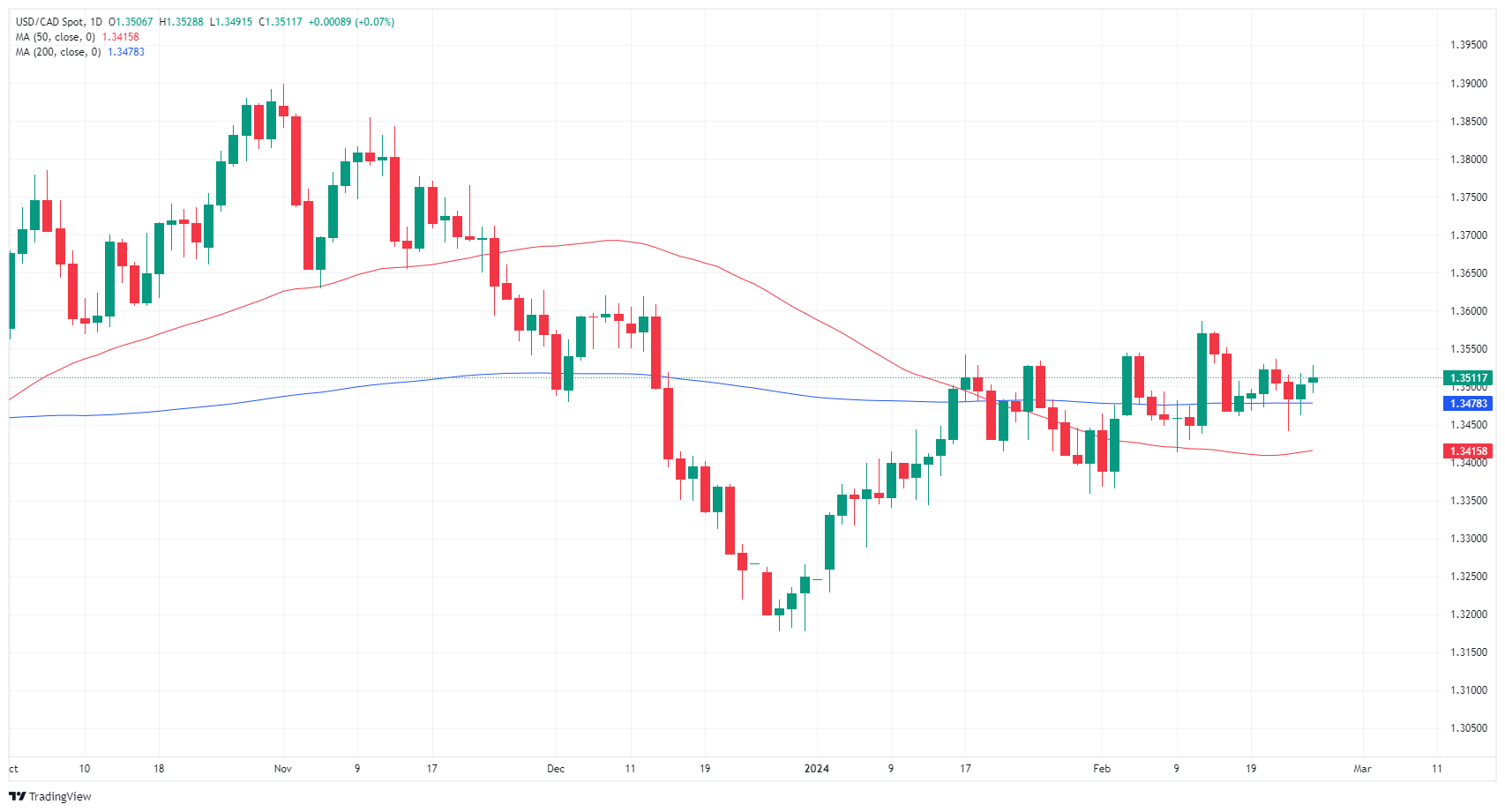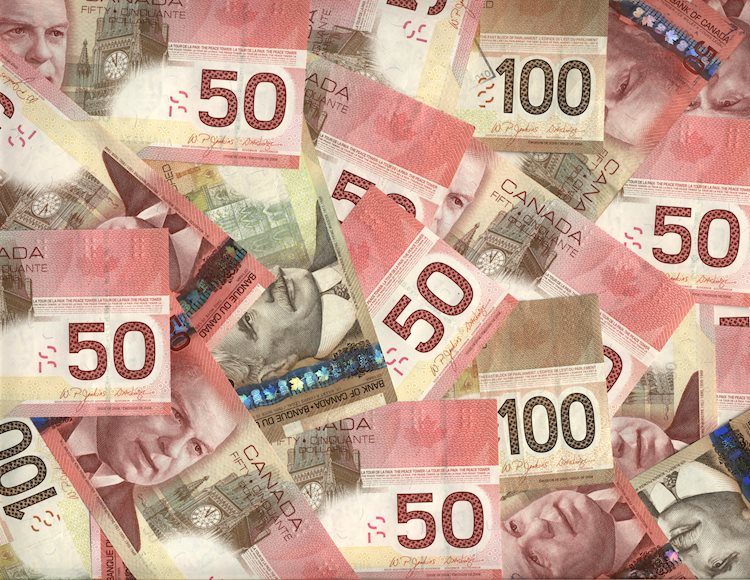- USD/CAD continues Friday’s thin drift near the 1.3500 handle.
- Canada wholesale trade likely fell 0.6% in January.
- US New Home Sales rose 1.5% vs 7.2% previous, Durable Goods due tomorrow.
USD/CAD is stuck in a slow drift near 1.3500 as markets gear up for the week. Economic data remains thin on Monday, and traders will be looking ahead to Tuesday’s US Durable Goods Orders for January, as well as Wednesday’s US Gross Domestic Product (GDP) growth for the fourth quarter.
Canada is predominantly underrepresented on the economic calendar until Thursday’s Canadian GDP Q4 performance. StatCan noted on Monday that Canadian wholesale trade likely fell in January with January’s Canadian manufacturing sales seeing a slight bump.
Daily digest market movers: USD/CAD gears up for a key data week with easy Monday
- According to StatCan Flash Estimate, Canada’s January wholesale trade likely fell by 0.6% MoM, while January manufacturing sales likely rose 0.4% MoM.
- US New Home Sales Change rose 1.5% MoM in January compared to the previous month’s 7.2% (revised from 8.0%).
- US New Home Sales in January 661K versus 680K, previous 651K (revised from 664K).
- Tuesday’s US Durable Goods Orders for January is forecast to decline 4.8% MoM, previous print 0.0%.
- Canada’s Current Account is expected to record -1.25 billion on Wednesday, -3.22 billion previous.
- US fourth-quarter GDP growth forecast to hold steady at 3.3% for the year ended 4Q.
- Canada’s Q4 GDP slated for Thursday, forecast to rebound to 0.8% QoQ versus the previous -1.1%.
Canadian Dollar price today
The table below shows the percentage change of Canadian Dollar (CAD) against listed major currencies today. Canadian Dollar was the strongest against the Australian Dollar.
| USD | EUR | GBP | CAD | AUD | JPY | NZD | CHF | |
| USD | -0.26% | -0.06% | 0.03% | 0.43% | 0.16% | 0.22% | -0.08% | |
| EUR | 0.25% | 0.19% | 0.28% | 0.68% | 0.42% | 0.47% | 0.17% | |
| GBP | 0.04% | -0.22% | 0.08% | 0.48% | 0.21% | 0.27% | -0.03% | |
| CAD | -0.03% | -0.29% | -0.10% | 0.41% | 0.12% | 0.19% | -0.12% | |
| AUD | -0.45% | -0.70% | -0.49% | -0.40% | -0.27% | -0.21% | -0.51% | |
| JPY | -0.16% | -0.43% | -0.18% | -0.13% | 0.28% | 0.07% | -0.25% | |
| NZD | -0.23% | -0.48% | -0.27% | -0.19% | 0.21% | -0.06% | -0.28% | |
| CHF | 0.06% | -0.20% | 0.01% | 0.09% | 0.50% | 0.22% | 0.29% |
The heat map shows percentage changes of major currencies against each other. The base currency is picked from the left column, while the quote currency is picked from the top row. For example, if you pick the Euro from the left column and move along the horizontal line to the Japanese Yen, the percentage change displayed in the box will represent EUR (base)/JPY (quote).
Technical analysis: USD/CAD sees technical floor near 1.3500 as pair churns
USD/CAD near-term technical action continues to see a sideways grind as investors grapple with picking a meaningful direction. 1.3500 remains a key technical level, keeping intraday bids magnetized to the major price handle. USD/CAD has cycled 1.3500 in a rough sideways channel since February 5.
Daily candlesticks remain stuck to the 200-day Simple Moving Average (SMA) at 1.3478 just beneath 1.3500. USD/CAD remains stuck in the middle ground between December’s lows near 1.3177 and last November’s early peak near 1.3900.
USD/CAD hourly chart
USD/CAD daily chart
Canadian Dollar FAQs
The key factors driving the Canadian Dollar (CAD) are the level of interest rates set by the Bank of Canada (BoC), the price of Oil, Canada’s largest export, the health of its economy, inflation and the Trade Balance, which is the difference between the value of Canada’s exports versus its imports. Other factors include market sentiment – whether investors are taking on more risky assets (risk-on) or seeking safe-havens (risk-off) – with risk-on being CAD-positive. As its largest trading partner, the health of the US economy is also a key factor influencing the Canadian Dollar.
The Bank of Canada (BoC) has a significant influence on the Canadian Dollar by setting the level of interest rates that banks can lend to one another. This influences the level of interest rates for everyone. The main goal of the BoC is to maintain inflation at 1-3% by adjusting interest rates up or down. Relatively higher interest rates tend to be positive for the CAD. The Bank of Canada can also use quantitative easing and tightening to influence credit conditions, with the former CAD-negative and the latter CAD-positive.
The price of Oil is a key factor impacting the value of the Canadian Dollar. Petroleum is Canada’s biggest export, so Oil price tends to have an immediate impact on the CAD value. Generally, if Oil price rises CAD also goes up, as aggregate demand for the currency increases. The opposite is the case if the price of Oil falls. Higher Oil prices also tend to result in a greater likelihood of a positive Trade Balance, which is also supportive of the CAD.
While inflation had always traditionally been thought of as a negative factor for a currency since it lowers the value of money, the opposite has actually been the case in modern times with the relaxation of cross-border capital controls. Higher inflation tends to lead central banks to put up interest rates which attracts more capital inflows from global investors seeking a lucrative place to keep their money. This increases demand for the local currency, which in Canada’s case is the Canadian Dollar.
Macroeconomic data releases gauge the health of the economy and can have an impact on the Canadian Dollar. Indicators such as GDP, Manufacturing and Services PMIs, employment, and consumer sentiment surveys can all influence the direction of the CAD. A strong economy is good for the Canadian Dollar. Not only does it attract more foreign investment but it may encourage the Bank of Canada to put up interest rates, leading to a stronger currency. If economic data is weak, however, the CAD is likely to fall.



 RULE-BASED Pocket Option Strategy That Actually Works | Live Trading
RULE-BASED Pocket Option Strategy That Actually Works | Live Trading